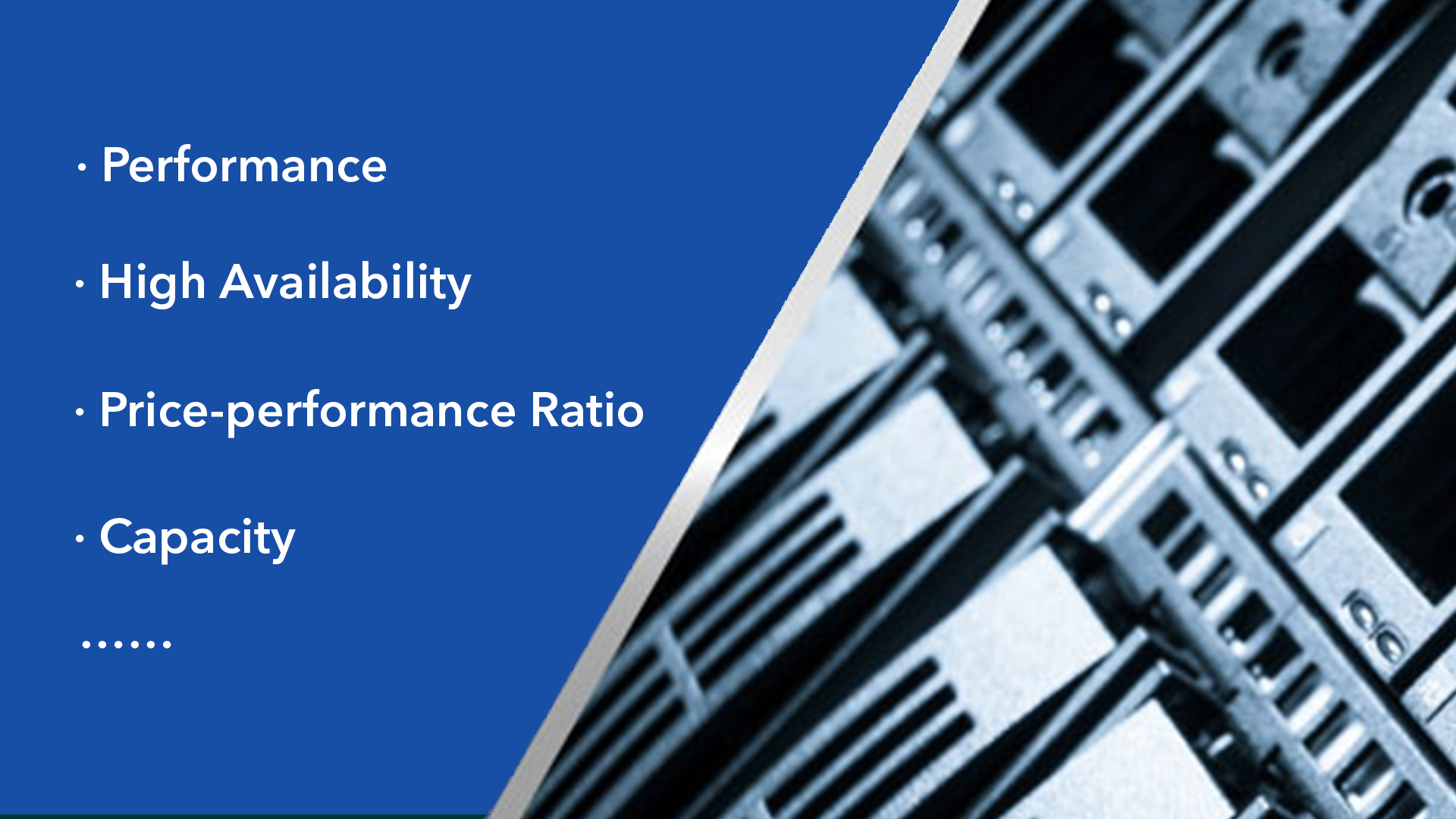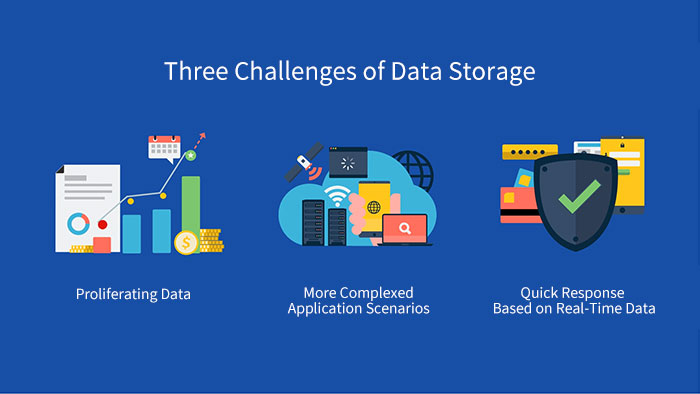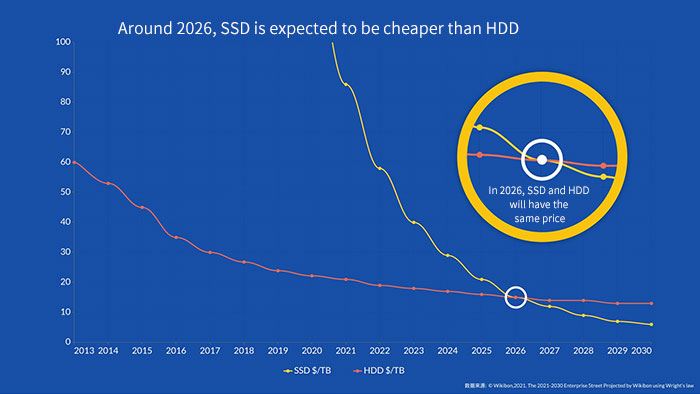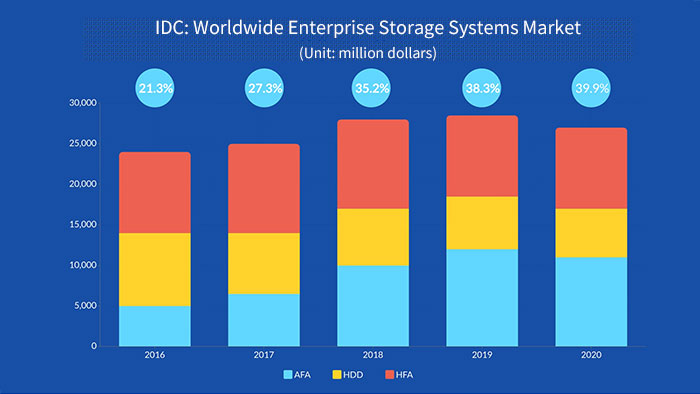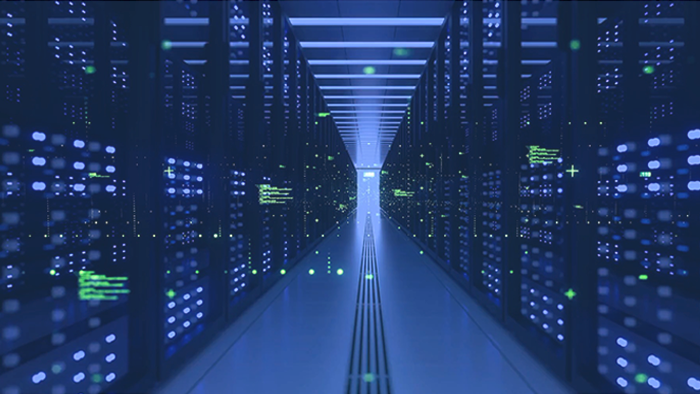-
 Proliferating Enterprise Data01
Proliferating Enterprise Data01 -
 New Challenges to Storage Technology02
New Challenges to Storage Technology02 -
 Urgent Market Demand for All Flash Array03
Urgent Market Demand for All Flash Array03 -
 Energy Saving04
Energy Saving04
-
![2022121606030164]() Why All-Flash Arrays ?
Why All-Flash Arrays ?All-flash arrays (AFAs) address the demand for scaling storage performance to handle today’s intensive real-world data-access traffic; they belong to a new category of enterprise-storage systems comprised of flash memory, or solid-state drives (SSDs).
SSDs process tens of thousands of random I/O requests per second, far more than legacy hard disk drives (HDDs). SSDs are also more energy efficient, and latency is lower too. These advantages make AFAs the superior storage choice.
-
![2023010909191978]() New Challenges to Storage Technology
New Challenges to Storage TechnologyRecent changes bring challenges to storage technology, from digital transformation to carbon neutrality and Covid-19. Facing massive data, requirements of enduring storage security, complexed and important high-performance application scenarios, as well as high energy consumption and operation and maintenance costs, enterprises need a new storage architecture to meet their four requirements of high performance, high reliability, high capacity and high performance at the same time.
-
![2023010909193971]() Urgent Market Demand for All Flash Array
Urgent Market Demand for All Flash ArrayWith more advantages than traditional storage technology, the innovative all-flash array technology can better meet the needs of future businesses, making it inevitable to be widely applied.
The end of HDD’s prosperous times is earlier than expected: HDD shipments keep falling, and in 2030, they will be the same as in 1990. In 2027, HDD shipments will begin to be lower than SSDs. However, forward-looking companies will neither wait until SSD price drops to the same as HDD nor passively accept a new architecture until the moment of unchanged cost and capacity. AccelStor can perfectly meet customers' expectations in terms of capacity, function, performance or cost-effectiveness, allowing customers to enjoy the benefits of the new architecture in advance. -
![2023010909194750]() AFA’s Large Market of Tens of Billion Dollars
AFA’s Large Market of Tens of Billion DollarsThe IDC market report shows that from 2020 to 2024, the global market of AFA will grow at 7.5% CAGR. In 2020, AFA accounted for nearly 40% of the global external memory market, whose overall year-on-year growth keeps falling due to COVID-19.
-
![2023091503244258]() Energy Saving
Energy SavingAccording to the International Energy Agency, the global data center electricity consumption of data centers was about 240-340 TWh in 2022, and there is an upward trend yearly. If we switch HDDs to SSDs in all data centers, the storage portion can immediately save up to 70% on power costs (Source: IFP, Is All-Flash the Answer to Green Data Storage). Storage accounts for about 35% of the data center, meaning using all-flash storage can save 58.8-83.3 TWh of electricity. According to the U.S. National Environmental Protection Agency, this is equal to reducing CO2 emissions by 32.53-46.08 billion kilograms, equivalent to planting 259 million trees annually.



